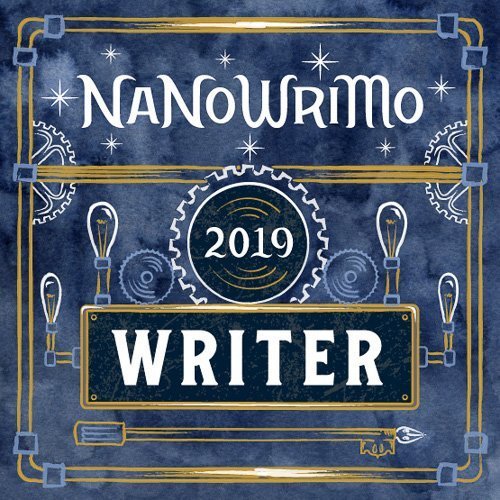the shop
amanda borders | mystery writer & editor
Quill&Glass
Quill&Glass
amanda riley | mystery writer & editor
writing | Editing | photography
about
editing
blog
contact
resources
shop
menu
writing • editing • photography
read the post
March is here, bringing us springtime weather and all things Irish! Today I’m sharing 6 mysteries with Irish settings that would make perfect St. Patrick’s Day reading.
read the post —
November is right around the corner, and with it comes National Novel Writing Month. Stock up on coffee, tea, and chocolate, and let’s get writing!
What is National Novel Writing Month?
NaNoWriMo, as it is affectionately known to the thousands of writers who look forward to it each year, is a month-long writing free-for-all. The goal is to start the month with an idea for a novel and to write 50,000 words of that novel by November 30th.
It’s not as insane as it sounds. In 2018, 287,327 people participated in NaNoWriMo. Of those, 35,387 “won,” that is, reached the 50,000 word goal. That’s about 29%.
Check out this post from last year for more information about NaNo.
What do I win?
Well, nothing exactly. No prizes are awarded to those who manage to get 50,000 words down before midnight on the 30th, but they do have all that sand in their box, just waiting for them to start building castles.
There’s also a nice certificate to print out and hang on your wall.
If that’s not enough to tempt you, NaNoWriMo has several sponsors who offer incentives. For instance, winners can purchase Scrivener at a 50% discount.
Speaking of Scrivener . . .
My favorite Scrivener trick
I am not an organized person by nature. I try, but I usually fail spectacularly. Scrivener helps me keep my scattered thoughts neatly organized and easy to find. I could go on for days about how much it has helped me with organizing my writing.
But this tip has nothing to do with organization and everything to do with inspiration. As a photographer, I’m a very visual person, and it really helps me to be able to see my characters and settings. I have Pinterest boards for my books, but clicking over to Pinterest when I’m supposed to be writing . . . doesn’t end well.
What I really needed was an inspiration board in Scrivener, so that I could take a virtual stroll through my fictional town without getting distracted by the internet. Luckily, creating an inspiration board with Scrivener is super easy.
How To Create an Inspiration Board In Scrivener
1 | Create a new folder to hold your images
Add a new folder to the binder. This will be the basis of your inspiration board. You can add more folders inside this one, or simply keep all your photos in the same folder. I divided my inspiration folder into sections for characters, their homes, and my fictional town.
2 | Next add some images to your inspiration folder
There are a couple of ways to do this, depending on what you want to keep in your folder.
For an Images Only Board
The simplest way to add images is to click on the inspiration folder so that it is active, then drag and drop images into the editor pane. (That’s the big one in the middle where you type your manuscript.) Alternatively, you can right-click on the inspiration folder then choose Add > Existing Files, which is useful for adding several images at once..
The images will be added to the folder as image files rather than documents, and the image will appear in both the editor pane and the synopsis pane of the inspector, as well as on the index card in cork board view, which is important for creating a visual inspiration board.

By clicking on the text/image toggle in the upper right corner of the synopsis pane of the inspector, shown below, you can switch from image view to text view, where you can jot notes and title the image.

You can also add notes in the notes pane below the synopsis pane, but you won’t be able to add text in the editor pane. Double-clicking on the image in the editor pane will open a window that allows you to adjust the scale and orientation of the image.
For an Images + Text Board
Sometimes I prefer to create documents within the inspiration folder, then add images to them or to add images to existing documents in the binder, such as character or location sketches.
To add a photo to a document, click the image/text toggle in the upper right corner of the synopsis pane of the inspector. When you toggle to image, you’ll see a prompt to drag an image into the synopsis pane. Just drag it over and drop it in.

The image will appear in the synopsis pane as well as on the index card in cork board view as long as the toggle is set to image. It will not appear in the editor pane. (It’s also possible to drag images into the notes section of the inspector, but those won’t show up in cork board view.)
3 | Switch to Freeform Cork Board
When I’m working with scene cards to get my plot in order, I like to have all my notecards in nice orderly rows on the cork board. But for my inspiration board, I prefer a slightly messier approach. To get the mood board effect for your inspiration board, you must first switch your cork board to freeform.
Click over to cork board view and look for the buttons at the bottom of the screen.. You want the one that looks like a four-paned window and the one to its right.

The window-shaped button will give you nice neat rows of cards. But when you click on the freeform button to the right of it, you get this . . .

These are a few of the images in my Hawthorne folder. The book I’m working on right now is set in autumn, so these are mostly images of what I imagine my fictional small town might look like in the fall. This is especially helpful when it’s 95 degrees outside and I’m not feeling the fall atmosphere.
In freeform mode, the cork board is just like an actual bulletin board. You can drag your images around the board and arrange them however you want. It’s a mood board for your novel.
Try adding some photos to your Scrivener project
Much like Photoshop, Scrivener offers several ways to do the same thing, so I’m sure there are other ways to add images to your project. These are just the methods I use. If you’ve never made an inspiration board for your Scrivener project, give it a try. You might be surprised what a boost it gives to your creativity.
Have you ever participated in NaNoWriMo? If not,
you should join us this year!
read the post —
50,000 words in 30 days? That’s madness! Or is it? Over 400,000 people participated in this month of madness last year. You should join us!
What is National Novel Writing Month? Why 50,000 words?
National Novel Writing Month, or NaNoWriMo as it’s affectionately known by participants around the world, began in 1999 with 21 participants who decided it would be fun to write an entire novel in a month. They settled on 50,000 words because it was the approximate word count of the shortest novel on founder Chris Baty’s shelf—Brave New World—and the number stuck. Of the original 21 participants, only 6 reached the 50,000-word goal. Now the percentage of participants who “win” at NaNoWriMo hovers at about 17%.
I first participated in NaNo in 2012 and have participated to some degree each year since. Most years I start out with good intentions, but wander from the path about mid-November. In 2014, I managed to make it all the way to the finish line with just over 50,000 words.
What do I win?
While NaNoWriMo doesn’t offer traditional prizes to those who write 50,000 words by November 30, there is the satisfaction of setting a goal for yourself and reaching it, as well as the prize of 50,000 words on paper (or screen). You’ll also get a badge on your NaNo profile and a fun certificate to print out to prove you did it.
So why should I sign up for NaNoWriMo? I can do that on my own.
But will you? True, 1,667 words a day (what the daily goal works out to) isn’t that crazy. But for whatever reason, signing up on the website, creating a profile and this year’s book, and finding yourself surrounded by other enthusiasts is surprisingly motivating. Seeing that progress chart creep closer and closer to 50,000 words makes skipping your daily writing session to binge on Netflix less appealing. And something about the atmosphere of NaNo makes it easier to fling words onto the page with abandon, ignoring your inner critic, something I find incredibly difficult most days.
Also, while NaNoWriMo doesn’t offer prizes, they do have many sponsors who offer incentives to both participants and winners. In 2014 I won a coffee mug and a sheet of fun writing stickers from one of the sponsors. Last year, I signed up for The Great Course’s free month and ended up loving it so much I stayed with the paid subscription. In 2014 I also purchased Scrivener at the 50% discount offered to winners.
Just a few of this year’s sponsor offers:
- Scrivener is offering their extended free trial for NaNoWriMo participants. It extends the usual one-month trial to run instead from October 15th to December 7th, giving you time to both begin your planning early and export your final product. Participants can then purchase the program at a 20% discount, while winners receive 50% off.
- The Great Courses Plus is offering a free trial for the month of November with a 50% discount for the next 6 months for all participants. The Great Courses Plus offers lectures on a wide variety of topics, including writing instruction. (Note: Their website states that you’ll receive 50% off for the first 2 months, but their announcement on the NaNoWriMo page says 6 months.)
- IngramSpark is offering this year’s participants free title uploads and free revisions from November 1 to March 31.
You can find these offers along with many more on the NaNoWriMo member forum.
50,000 words in 30 days is a lot, but doing a little planning ahead of time can increase your chances of success.
My favorite tool for both planning and writing is Scrivener, and I’ve created a template to use for my own work. It’s designed with mystery novels in mind and contains lots of planning worksheets, as well as some tips and research links I find helpful. You can find it in the Quill and Glass Shop. (If you’ve never worked with templates in Scrivener, this tutorial will help you out.)
What are you waiting for? You’ve got almost 2 weeks to plan your novel.
Get on over to the NaNoWriMo website and get signed up. I’ll see you there!
I am a lifelong lover of stories, an avid mystery reader, a mom, a grammar geek, a photographer, a writer, and a freelance editor.
There is nothing I enjoy more than getting lost in a good story, except maybe helping other writers refine their stories so that their readers get lost in them.
Want to know more?
mystery writer & editor
I’m Amanda
Get to know me
hello there!
Praesent leo risus, sodales sed fermentum vitae, ornare ut metus. Maecenas ornare pellentesque metus a commodo. Lorem ipsum dolor sit amet, consectetur adipiscing elit. Suspendisse sed nibh non nisl finibus imperdiet.
Writing Routine
Tracker
free printable
send me the tracker


